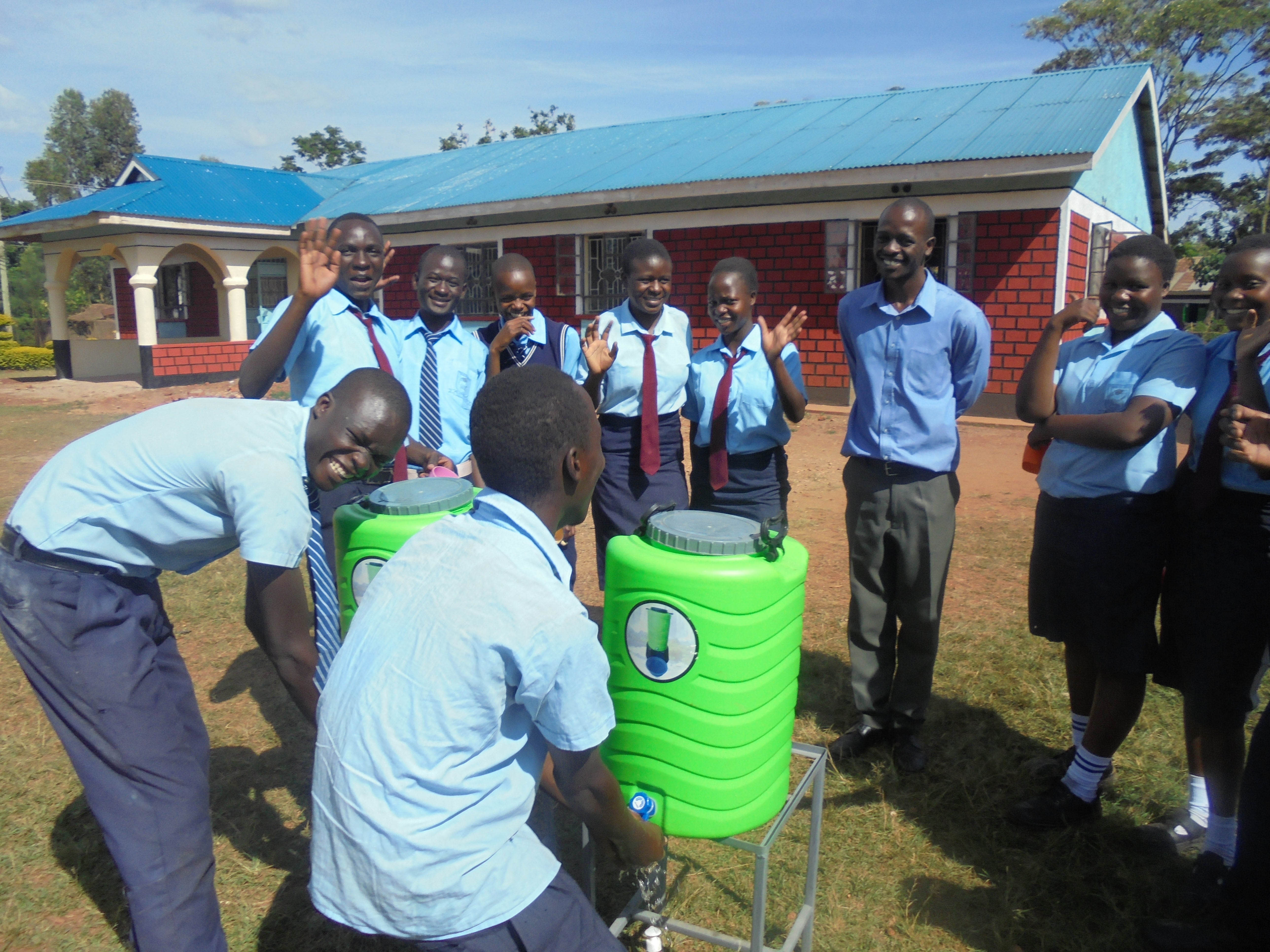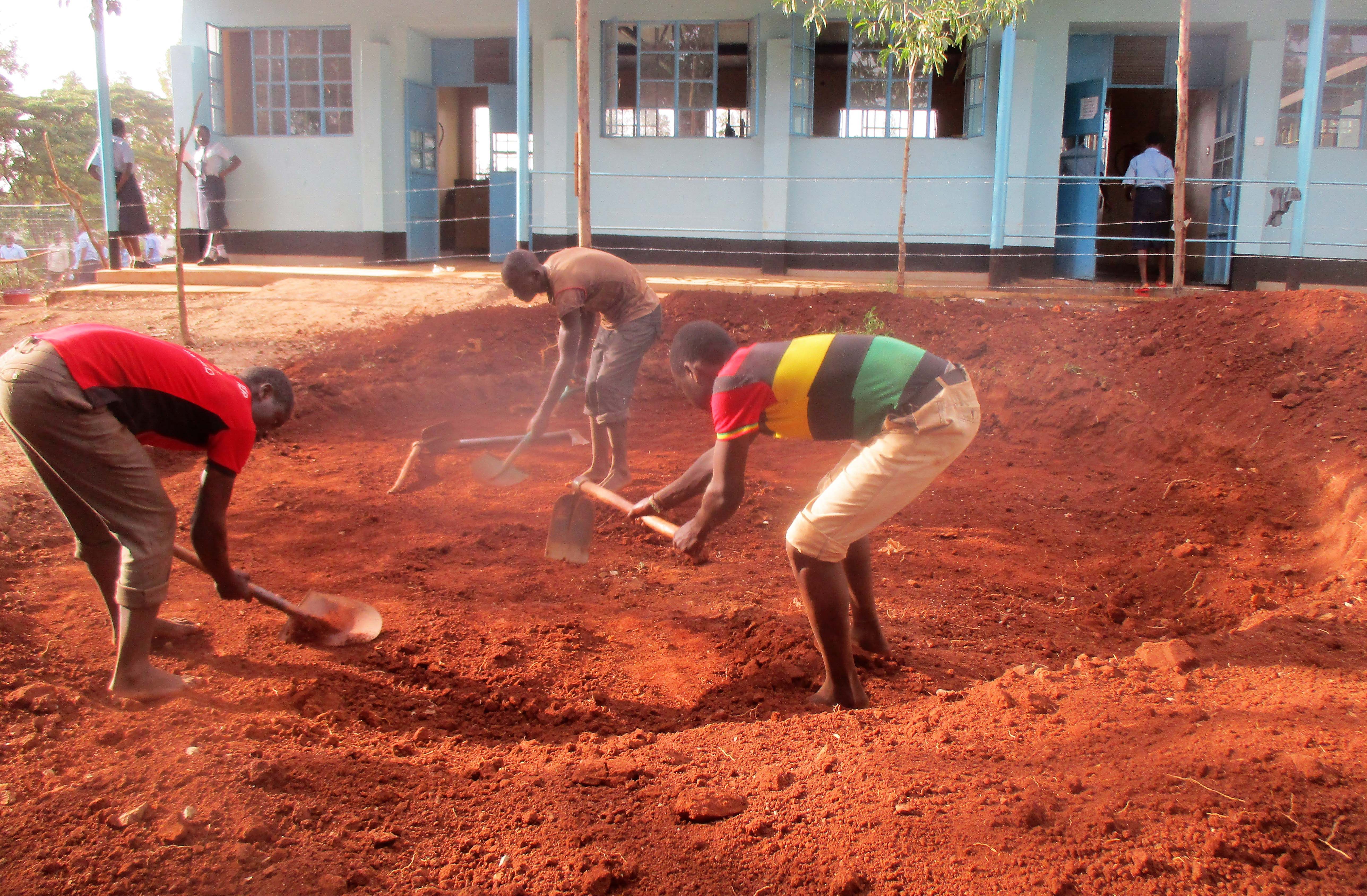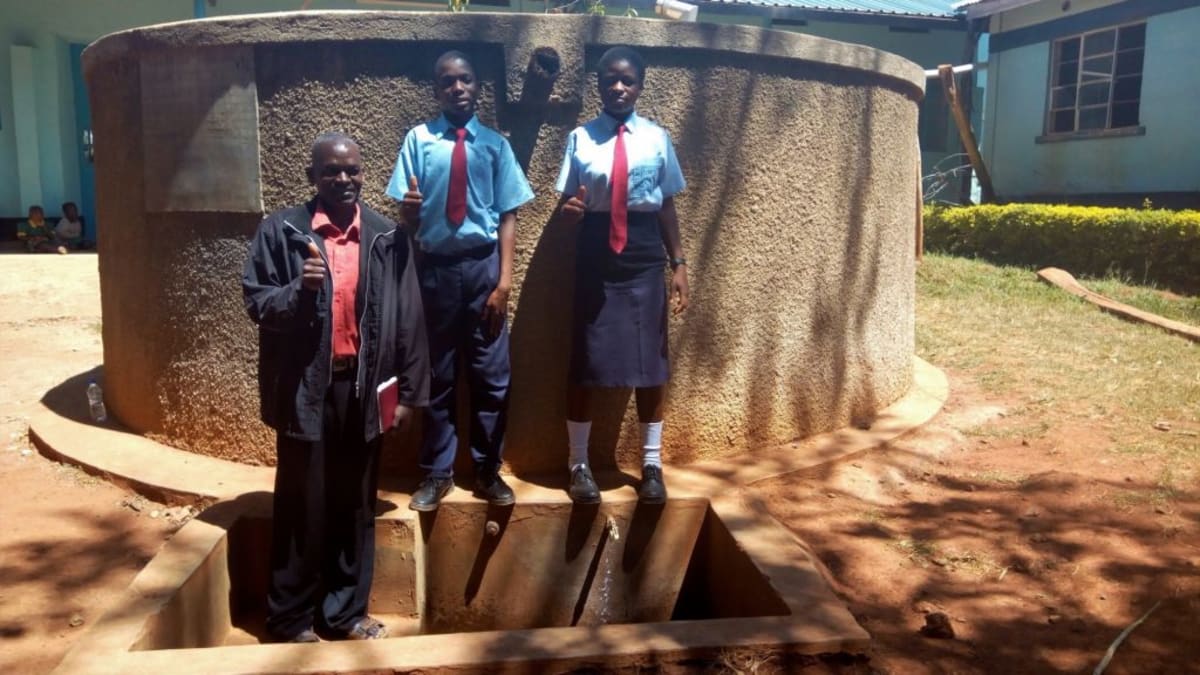This project is a part of our shared program with Western Water And Sanitation Forum (WEWASAFO). Our team is pleased to directly share the below report (edited for clarity, as needed).
Welcome to the School
A normal day at this institution begins at 6:30AM and goes until 4:30PM. Students attend lessons, enjoy break times for snacks, go to the spring to collect water, and play games and participate in clubs. The students here are enrolled in Christian Union (CU), scouting club, science club, math club, environmental club and agricultural club. Every Wednesday between 7:10 and 8:00AM, the entire school goes to the PAG church hall for spiritual instruction from the school chaplain, who also gives students counseling on life issues. On rare occasions, the school invites motivational speakers to talk to students on Saturdays; this is rare because of the high cost of guest speakers.
People in this village own small plots of land on which they plant a few tea bushes. When harvested, leaves from these tea bushes fetch meager pay when sold to Mudete Tea Factory. Some villagers have opted to grow maize or hire themselves out for casual labor. Only a few homes own a dairy animal. Many other community members do businesses by selling milk, sugarcane and green vegetables to travelers along the pathways. Despite the poverty in this area, the school principal said he is impressed with how much the community members thirst for education. "I have two cooks and one guard, though we pay them so little here, they have managed their income and have educated three children, one child finished high school last year," he said.
Water Situation
There is no water source on school grounds, so students are sent to a community spring to fill containers with water. Students must go on the walk for water multiple times a day, traversing steep hills walking one direction, and lugging full jerrycans of water on the way back.
That spring is called Ivana, and it was protected years ago by another well-wishing team. However, proper drainage was never dug and the water source has become an extraordinary breeding ground for mosquitos. Each time a student fetches water from Ivana Spring, they risk malaria.
Students must wade into the water or balance at the side as they hold their jerrycans under the discharge pipe. Once returned to school, the water is delivered to the kitchen and stored in those same containers. As the cooks use the water, they make sure the water containers are cleaned with soapy water.
Marumulah, a form four student, told us "It is like a punishment to be sent to collect water from Ivana Spring, but we only do so because we lack sustainable alternatives." Water shortages have hampered both personal and environmental hygiene at the school; there isn't enough for hand-washing or mopping of classrooms.
Sanitation Situation
There are seven pit latrines on school grounds, but they are old and now dangerous to their users. Some are built over soft, collapsing soils. There are cracks in the walls, and some even lack doors needed for privacy. Others have pits nearly full of waste.
There is one hand-washing station, but it is set aside just for teachers and other staff.
We were surprised that because of the poor latrine conditions, open defecation wasn't an issue. The principal told us that students patiently wait in the long lines for latrines during break. The principal also shares that though every household in the area doesn't have their own latrine, they at least share with a neighbor to avoid going out in the open.
Principal Joseph Onyango does admit that though they try their best, the school still faces health challenges. He told us that "the school has complex health challenges such as a few cases of students living with HIV/AIDS in fear, water shortages and inadequate sanitation facilities. We live by the grace of God because should there be an outbreak of waterborne diseases, we are not prepared to manage it in the face of the current health situation of the school and its neighborhood."
Plans: Hygiene and Sanitation Training and Hand-Washing Stations
Training will be held for two days. The facilitator will use PHAST (participatory hygiene and sanitation transformation), ABCD (asset-based community development), CTC (child to child), lectures, group discussions, and handouts to teach health topics and ways to promote good practices within the school. The CTC method will prepare students to lead other students into healthy habits, as well as kickstart a CTC club for the school. This CTC club will oversee the new facilities, such as hand-washing stations, and make sure they are kept clean and in working condition. The two hand-washing stations will be delivered to the school, and the club will fill them with water on a daily basis and make sure there is always a cleaning agent such as soap or ash.
Plans: Rainwater Catchment Tank
A 50,000-liter rainwater catchment tank will be constructed on school grounds. Teachers, students, and parents will gather the materials needed for this project, including sand, ballast, bricks, and hardcore. This contribution will fuel a sense of responsibility for the school and community to take care of their new facilities. Once materials are mobilized, the WEWASAFO team will arrive to lead the construction effort.
With adequate clean water, the school will have water for drinking, cooking, cleaning, and hand-washing. Students will no longer waste valuable time walking to the spring.
Plans: VIP Latrines
Two triple-door latrines will be constructed, providing three new latrines for each gender. Latrine materials will be mobilized the same way as the tank, ensuring the school feels these facilities are truly theirs. And with a rainwater catchment tank nearby, there will be enough water to keep them clean.
School administration and parents are positive that with these new facilities and training, their students’ academic performance will improve. Students will be healthy and empowered to focus on what’s important!

 Rainwater Catchment
Rainwater Catchment
 Rehabilitation Project
Rehabilitation Project


































